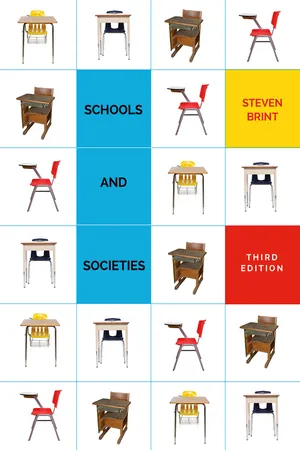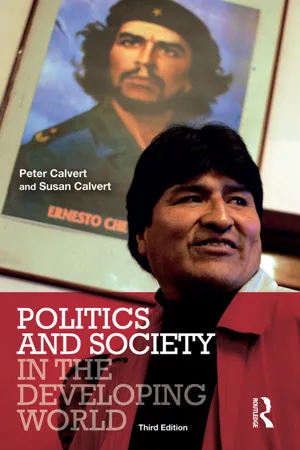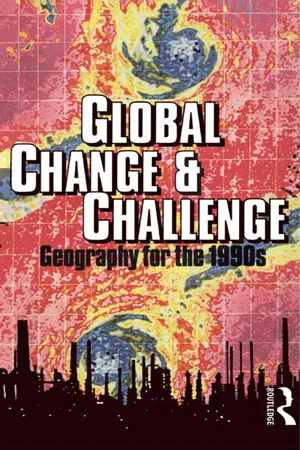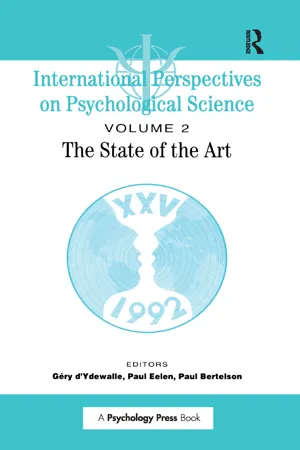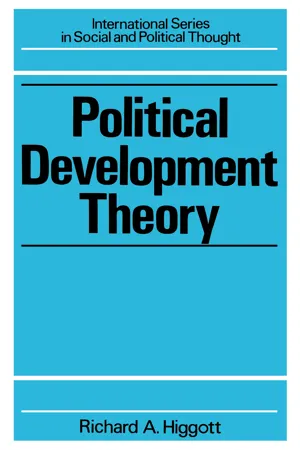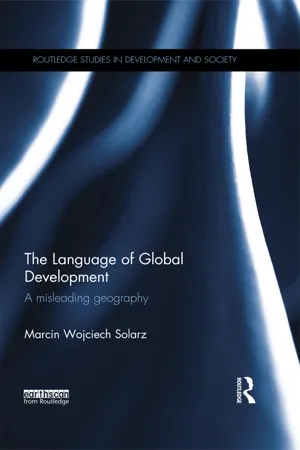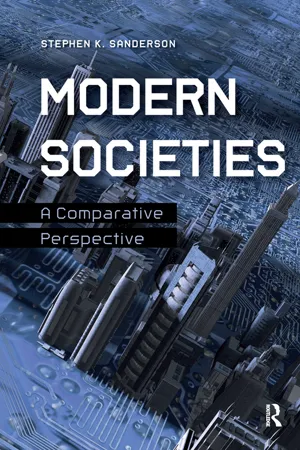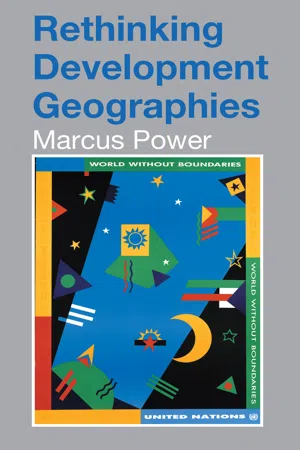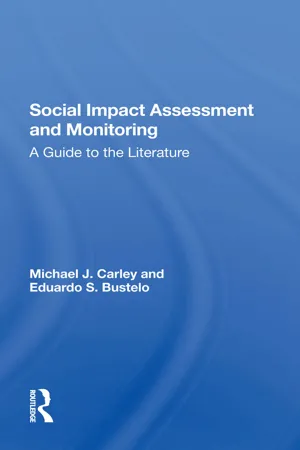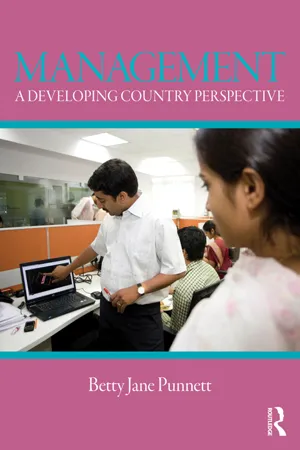Social Sciences
The Developing World
The developing world refers to countries that are still in the process of industrialization and have lower living standards compared to more developed nations. These countries often face challenges such as poverty, lack of access to education and healthcare, and political instability. The term is used to highlight the economic, social, and political disparities between these nations and the more developed ones.
Written by Perlego with AI-assistance
Related key terms
11 Key excerpts on "The Developing World"
- eBook - ePub
Schools and Societies
Third Edition
- Steven Brint(Author)
- 2017(Publication Date)
- Stanford Social Sciences(Publisher)
3 SCHOOLING IN The Developing WorldAccording to the United Nations, fewer than 50 countries (of 188) are highly developed (UNDP 2014). The remaining countries are at varying levels of development, including more than 80 that would qualify by any measure as struggling to provide adequate income and health and education resources to their populace. The Developing World includes most of the Southern Hemisphere: much of Latin America and the Caribbean; some of the war-torn lands of Southeast and East Asia, such as Cambodia, Myanmar, and North Korea; islands like Papua New Guinea in the southern Pacific Ocean; the southern Asia peninsula that includes India, Pakistan, and Bangladesh; many of the Arab countries of the Middle East (though not most of the Gulf States); and virtually all of Africa.Some people living in industrialized societies envy the rich folk knowledge of rural people in these less developed parts of the world. They believe that people in these areas interact in a simpler and more satisfying way with their environments. These sentiments echo those of the French philosopher Jean-Jacques Rousseau (1964). Writing in the mid-1700s, Rousseau criticized the unnaturalness of urban, commercial civilization and exalted the greater sense of integration of societies untouched by the corrupting influence of urban civilization.However popular these views may be on a few college campuses in the industrial world (and among supporters of Green parties in Europe), the leaders of less developed countries have consistently rejected them—and for compelling reasons. Most inhabitants of imagined idyllic villages actually live in destitute conditions, lacking the amenities of the modern world, from indoor plumbing to cell phones. The historian Daniel Kevles summed up this reality well: - eBook - ePub
- Peter Calvert, Susan Calvert(Authors)
- 2014(Publication Date)
- Routledge(Publisher)
Chapter 3 ). A decisive response laying strong emphasis on political or economic aspects of development usually reflects strong attachment to a particular perspective. It would be hard to criticise the scope and range of the definition given by Michael Todaro:Development must therefore be conceived of as a multidimensional process involving major changes in social structures, popular attitudes and national institutions, as well as the acceleration of economic growth, the reduction of inequality, and the eradication of poverty. Development, in its essence, must represent the whole gamut of change by which an entire social system, tuned to the diverse basic needs and desires of individuals and social groups within that system, moves away from a condition of life widely perceived as unsatisfactory toward a situation or condition of life regarded as materially and spiritually ‘better’. (Todaro 1994: 16)At its simplest and most cogent the term may be best expressed as in the work of Amartya Sen (Sen 1981) as a reduction in vulnerability and as increased strength to counter problems consequent upon an enhancement of the options available. For Sen, development involves the increased freedom of the population. There is in this a validity that other definitions do not so adequately express, since income as measured by purchasing power gives freedom, but the freedom it gives also includes a capacity to meet a series of needs within society, for participation, health, education, etc.Which are the developing countries?
Like most things in the social sciences, this is not as simple as it looks. The term developing countries is a very general term which may be applied to all except the advanced industrialised countries (AICs) - eBook - ePub
Global Change and Challenge
Geography for the 1990s
- Robert Bennett, Robert Estall(Authors)
- 2012(Publication Date)
- Routledge(Publisher)
8DEVELOPMENT AND THETHIRD WORLD
Sylvia Chant
DEFINITIONS
The term ‘Third World’ is normally used of those regions which are less developed than advanced capitalist countries, such as the UK and the USA (the ‘First World’) or what have until recently been centrally planned economies, such as the USSR or Eastern Europe (the ‘Second World’). Geographically speaking, the Third World covers Latin America, the Caribbean, Africa (excluding South Africa), the Middle East, South and South East Asia, and most of Oceania except Australia and New Zealand. Given that all these regions lie south of northern America, Europe and the USSR, the term ‘South’ is also used to refer to the Third World, especially since the publication of the Brandt Report (1980) North-South: A Programme for Survival (see Figure 4.2 ).The term ‘less developed’ itself is, of course, relative. It also embodies a varied range of economic, demographic, social and political characteristics which may not always apply, or apply in equal measure, to all Third World countries. The conditions used to describe such countries normally include, on the one hand, low levels of industrialisation, urbanisation, per capita gross national product, life expectancy, literacy and nutritional intake and, on the other hand, high rates of infant mortality (alongside population growth), poverty, inflation, reliance on primary export products, and per capita debt. Another notable feature of Third World countries is that most have been subject to some form of colonial rule in the last 500 years.A commonly used development indicator is the level of per capita GNP. This gives a measure of income disparities between countries and was discussed in more detail in Chapter 4 - Paul Bertelson, Paul Eelen, Gery d'Ydewalle(Authors)
- 2013(Publication Date)
- Psychology Press(Publisher)
With the arrival of the scientific conceptualisation of the world which came from Europe and which was a relatively recent achievement, based on the work of Copernicus, Galileo, Kepler and Newton, such “traditional” viewpoints of the third world were neglected and discarded. The new Western conceptualisation had a philosophy of life, of the world, and a philosophy of humankind very different from the traditional ideas of China, Thailand, Uganda or Mexico. It was a philosophy and a world view opposed to and contradicting the traditional viewpoints. However, the new scientific philosophy was more efficient and had more probabilities of being successful than the traditional worldviews. Therefore, a conflict arose, which was very clear in the case of the sciences, including psychology and the rest of the disciplines that study human beings and society.What is the Third World?The label of “third world” is based on a geopolitical classification that is simplistic and contains inherent dangers. Contemporary society is supposed to be divided into three main groups: the first world (capitalistic/ industrialised), the second world (either communist or ex-communist) and the third world (developing). Other classifications refer to north and south, and developed and developing. What is classified as third world includes a large number of countries with large variations in terms of geographical features, economic development, level of education, health conditions, scientific advancement, population, nature of society, etc. In general, the third world is that part of humankind with the worst indexes of lifeexpectancy, mortality, morbidity, gross national product (GNP), birth and death rates, etc.However, as the terms “first”, “second” and “third” worlds have extended so much, we are going to use them instead of inventing new labels. The third world is considered to be Latin America, Africa (with the exception of South Africa) and Asia (except Japan and the newly industrialised countries such as Singapore, Taiwan and South Korea). These regions include the large majority of the world’s population, which in many cases lives in conditions of malnutrition, with high indexes of illiteracy, and with philosophies of life very different from the worldviews of the first and the second worlds. The developing countries have a number of communalities despite heterogeneity and diversity of the socio-political, historical and economic factors. These three to four billion people were not studied by the science of psychology until very recently.Table 18.1- eBook - ePub
Political Development Theory
The Contemporary Debate
- Richard Higgott(Author)
- 2005(Publication Date)
- Routledge(Publisher)
1Development and the Social Sciences: a Suggested Form of AnalysisSince World War II, all theorising about political development, be it positivist or Marxist, has in many ways emphasised ‘thought’ at the expense of material life. Ideas were taken to be the creator or determinant of the form history was to take in the Third World. It was commonly believed that the problems of the Third World could be solved by directly applying theoretical constructs derived from the study of the historical evolution of the West. When Western social, economic and political theorists turned their attention to the problems of the decolonising and developing world in the wake of World War II, the social, economic and political changes they came to expect—whether higher levels of economic productivity, rationalisation or secularisation—were widely accepted as deriving from our rapidly increasing knowledge of the world, both physical and social (see, inter alia, Black 1967:7; Eisenstadt 1973:231 and Boulding 1965:27–53).If we consider the central theoretical concerns of ‘development studies’ in the post-World War II period loosely as ‘growth’, ‘modernisation’, ‘progress’, ‘development’ or whatever, then it has to be said at the outset that the academy has fared much better than the actual focus of its attention—namely, the developing countries themselves. If the growth and development of the Third World had mirrored the growth and development of its chroniclers and theoretical analysts (in the 1960s especially), the Third World would now be a much healthier place. The contemporary decline of development studies is less to be explained by the ‘take-off’, or not as the case may be, of the Third World, than by the limited accomplishments, both theoretical and practical, of development theory itself. - eBook - ePub
- Marcin Solarz(Author)
- 2014(Publication Date)
- Routledge(Publisher)
Some authors who criticize the term ‘developing countries’ also argue that it poorly reflects and describes reality because it has a purely formal character, at least in the context of some international institutions. This objection is based on a rather unfortunate policy decision – probably justified at a political and diplomatic level, but unacceptable from a scientific perspective – that for example the World Trade Organization does not categorize a country as a developing nation on the basis of more or less accurate and objective criteria, but automatically, based on the unilateral declaration of the country concerned (although other WTO members can in fact challenge the decision). In practice, this means that the countries of the South ‘by choice’ may not be identical with the Third World identified on the basis of criteria allowing the international community to be divided according to achieved levels of development. And, in fact, these two sets of countries are not identical – for example, during the Cold War, Yugoslavia and Romania, on balance, only belonged to the group of ‘declarative’ developing countries (Prokopczuk 1983; Deszczyński 2001). Such an ‘institutional’ approach to determining ‘developing countries’ within the framework of the World Trade Organization has led to the category being considered ‘very fuzzy’ (Deubel 2008: 465). But the problem here is not so much the concept itself as the criteria for determining which countries qualify as belonging to the group of ‘developing nations’, which, in essence, means consent to the domination of diplomatic and practical–political priorities over development considerations.Discussion of the category ‘developing countries’ has led to other problems being raised. For example, some authors consider the meaning of the term ‘developed country’ to be unclear, which obviously has significant consequences for how ‘developing countries’ is understood (Haynes 2002). The ambiguity of the concept of development as a whole has also been commented on (Prokopczuk 1983; Haynes 2002). In addition, it has been argued that the term ‘developing countries’ is ultimately meaningless, since every country in the world has development as a key item on its agenda (Sauvy 1982). The question has also been posed as to whether the (at times, drastic) socioeconomic gaps that exist both in developing and developed countries are not an additional source of difficulty of a terminological nature for the understanding and use of both concepts (Haynes 2002).In the mid-1970s, at a conference in Algiers, economists from Africa, Latin America and Asia apparently agreed that it was necessary give up the fiction of the term ‘developing countries’ and use the name ‘Third World’, which, though imprecise, was, all things considered, burdened with fewer defects (Giełżyński 1984; Malendowski 1998b; Deszczyński 2001). However, this agreement, if it did ever really occur, was never anything more than a dead letter, as the term ‘developing countries’ is still one of the most common terms used to designate underdeveloped countries. J. Haynes (2002) pointed out that justification for the use of this term is, in particular, the fact that it is favoured by most of the countries to which the name can be applied, as well as by worldwide institutions such as the UN. - eBook - ePub
Modern Societies
A Comparative Perspective
- Stephen K. Sanderson(Author)
- 2015(Publication Date)
- Routledge(Publisher)
Chapter 4 The Less-Developed World If we exclude all of the mini-states, there are about two hundred nation-states in the world today; of these, only about thirty-five can be considered rich democracies. The rest are either poor countries or countries with only moderate levels of social and economic development. The world’s poorer countries have been variously called the Third World, underdeveloped, developing nations, less-developed, or the Global South (most of the rich democracies being located in the so-called Global North). The best terminology, I think, is the phrase “less-developed,” and we can refer to the condition of being such a country as “underdevelopment.” This chapter is about these countries. It shows how they differ from the rich democracies and also seeks to explain why the less-developed countries lag behind the favored few. THE NATURE OF UNDERDEVELOPMENT Table 4.1 shows levels of development for a selected set of less-developed countries, using the same categories used in Chapter 1 (Table 1.1), with one added. We can clearly see that most of the less-developed nations have per capita GDPs that are quite low when compared to those of the rich democracies. The average per capita GDP of the less-developed nations shown in Table 4.1 is $3,195, obviously much lower than the average for the rich democracies, which is $37,741. But there are also significant differences among different regions of the less-developed world. Latin America is best off, with an average per capita GDP of $4,410; Asia is next with an average of $3,932; Africa lags far behind at $1,242. Actually, this figure for Africa is misleading, for there are major differences in geography and culture between Africa north of the Sahara and sub-Saharan Africa - eBook - ePub
Economy/Society
Markets, Meanings, and Social Structure
- Bruce G. Carruthers, Sarah Louise Babb(Authors)
- 2012(Publication Date)
- SAGE Publications, Inc(Publisher)
development began to be dominated by economists advocating reliance on free market forces. The governments of poor countries around the world received regular visits from economists working for international organizations who gave them detailed advice about how to improve their economies. The economists working within their own governments gave them similar advice, which could be summarized as follows: Grow the economy by freeing markets. More recently, however, economists’ advice to developing countries has become more diverse and more open to considering the nonmarket foundations of development. This chapter is divided into three sections. The first examines how economic development should be defined. The second section looks at some of the advice that economists have given to developing countries since the founding of their discipline—and the ways that governments have followed and ignored that advice. Finally, the third section looks at sociological contributions to development debates.Economic Development Defined
If you have traveled back and forth between the developed and The Developing World, you have an intuitive understanding of what economic development means—you know it when you see it. In reality, however, the meaning of economic development is more difficult to pin down than it appears. Development, the process of improving people’s lives over time, is a fundamentally relative concept, in the sense that what counts as “developed” changes over time. One of the problems of underdeveloped countries is that they have no fixed point of development to catch up to: As countries such as the United States continue to grow and become more technologically sophisticated, countries such as Mexico are in danger of falling increasingly far behind.Development is also a complex and contested - eBook - ePub
- Marcus Power(Author)
- 2004(Publication Date)
- Routledge(Publisher)
spatiality of power and discourse in development: who is allowed to speak in certain kinds of discourses, where does this take place and with what implications for power relations? There are important social relationships between professionals, institutions and communities that we need to understand more fully. In this sense the dissemination of development is a two-way process which is never fixed in time or space but is rather fluid and dynamic, constituting peoples and places in a variety of contexts and settings. The spaces in between discourses, institutions and subjects in development are also important here, allowing us to pose further questions about the possibility of resistance to neoliberal discourses. There are also important variations here between the urban and rural spaces of development and between different gender and class groupings.One theme of this chapter concerns the way in which the image of ‘developing countries’ is disseminated in western contexts through media coverage of humanitarian crises, which is particularly important in the context of debates about globalisation (see Box 8.1). Media representations therefore enframe the countries of the ‘Third World’ in multiple ways which often impact, through such processes as the ‘CNN effect’, on the nature and timing of humanitarian intervention. Why did none of the countries listed in Table 8.1 ever receive anything like the kind of western media attention or the level of humanitarian assistance that had been on offer to Kosovo in the same year? (Oxfam, 1999). It has been estimated that for every African life the world was willing to pay approximately US$10 in humanitarian aid, whereas for a Kosovan the figure stood at some US$600 (excluding peace-keeping and reconstruction costs). This theme of incomplete coverage was also explored at a gathering of journalists from both specialist African and mainstream British publications in 2001, brought together to discuss issues of representation and responsibility in covering stories about Africa and African peoples. The editor of New African magazine (Baf-four Ankomah) bemoaned the ‘heart of darkness’ rhetoric which recurred constantly in western reporting, perpetuating notions ‘from the ages of slavery and colonialism about why things happen in Africa’ (Reporting the World, 2002: 1). Sensational pictures led the way with western audiences according to another journalist, with a consequent lack of understanding of the complexity involved in these issues. Racism often predominated in representations of the Rwandan genocide in 1994, for example, characterising this as a spontaneous uprising of tribal hatred rather than an organised political campaign. During the Indonesian intervention in East Timor in the mid-1990s, many reports had simply bought into a discourse of ‘disintegration’ and ‘instability’ used by President Suharto to justify his authoritarian policies (Reporting the World, 2002: 1). Accounts of violence in Indonesia were often presented through a range of ‘fire’ metaphors, as riots ‘erupted’ and tense situations ‘ignited’, masking the real roots of violence and their relationship to the regime in power. Journalists then talked of stretching the agenda ‘sideways’, making extensions into wider issues of political change and development. Ron McCullagh, Director of Insight News - eBook - ePub
Social Impact Assessment And Monitoring
A Guide To The Literature
- Michael J Carley, Eduardo Bustelo(Authors)
- 2019(Publication Date)
- Routledge(Publisher)
Part 3 Social Assessment in Developing CountriesPassage contains an image
21 Social Assessment in Developing Countries
Introduction
In this chapter we shall try to systematically explore a wide area of literature focussed on the social aspects of planning and development in the third world.These social preoccupations have emerged mainly because many of the recommendations and policies implemented in almost three decades of development activity have not produced the "trickle down", or income redistributional effects, promised in the conventional, neo-classical theories of economic development. On the contrary, the process of economic growth has not usually been associated with a better distribution of national resources, but rather with a further concentration of wealth and income in the upper levels of national societies (see Report on the World Social Situation, United Nations, 1982). This situation, in conjunction with a growing interest in the social evaluation of development projects, originated a recent orientation away from solely economic assessments and toward socio-economic assessment. Projects are now being formulated with the particular objective of targeting better public policies and social programs directly to poor people.At the onset, we would like to point out some major characteristics of social assessment in developing countries. First, there is not a specific field or a problem area called "social impact assessment". That is, there is little or no SIA as a discrete activity as such, but many different socio-economic studies or evaluations with social concerns, whose main feature is an information organizing approach. Therefore, SIA in this chapter is defined very widely as assessment, evaluation, impact studies, and monitoring systems particularly concerned with the social dimensions of projects. Second, many studies undertaken in developing countries on the social dimensions of projects are well done, but only semi-published in the sense that they are reports rather than books and articles. For this reason, it may happen that important contributions are not included in this section because they are unknown to the authors. Third, bibliographies, books and reports from developing countries usually take extra time to be published or to be known, hence some of our references may be a bit more dated than in previous chapters. - eBook - ePub
Management
A Developing Country Perspective
- Betty Jane Punnett(Author)
- 2013(Publication Date)
- Routledge(Publisher)
www.gapminder.org ) has argued that we should stop calling a group of countries developing. He presents information on GDP per capita (adjusted for purchasing power parity) and life expectancy to illustrate the changing picture of the wealth and health of nations over the past two hundred years. His statistics show a dramatic convergence among countries in terms of both wealth and health (as seen in life expectancy). While the poorest countries still lag behind in terms of both measures, most countries have moved upward in terms of both quite dramatically in recent decades. He says that the distinction between developed and developing was useful in the past, but that the distinction is no longer clear in today’s world.The next sections consider the positive side of developing countries and events of 2011.The New Reality: The New FrontierThe Economist (September 16–22, 2006) had a cover which proclaimed “Surprise! The power of the emerging world.” A special report entitled “The new titans” is headlined by the following “China, India and other developing countries are set to give the world economy its biggest boost in the whole of history” and goes on to ask “what will that mean for today’s rich countries?” (p. 3). As this chapter pointed out at the outset, The Developing World includes most of the world’s population. Improvements in these economies can therefore have an enormous impact on the global economy. The Economist article indicates that in 2005 the combined output of emerging (developing) economies reached a milestone of more than half of total world GDP (measured at purchasing power parity). In addition, their share of world exports had increased to 43 percent from 20 percent in 1970, they consumed over half the world’s energy, and accounted for four-fifths of the growth in oil demand, and they hold over 70 percent of the world’s foreign exchange reserves. A comparison on GDP percentage increases over a year earlier shows the emerging economies growing at a higher rate than the developed economies.This is all good news for the poorer people of the world, suggesting that the gap between the rich and the poor, identified at the beginning of this chapter, may now start to move in the opposite direction. As the people of the developing countries become better off and have greater access to the goods and services that are now common in the developed world, what will this mean for management? From a management research perspective it is likely to mean that there will be more interest in these countries and their management. This chapter will need to be revised in a decade’s time, and, there will be more literature to draw on, and perhaps quite different views on developing countries by then. Students concerned with management in developing countries should watch their progress with interest. It may be that the weight of China and India is such that these two countries need to be considered separately from the rest of The Developing World.
Index pages curate the most relevant extracts from our library of academic textbooks. They’ve been created using an in-house natural language model (NLM), each adding context and meaning to key research topics.
